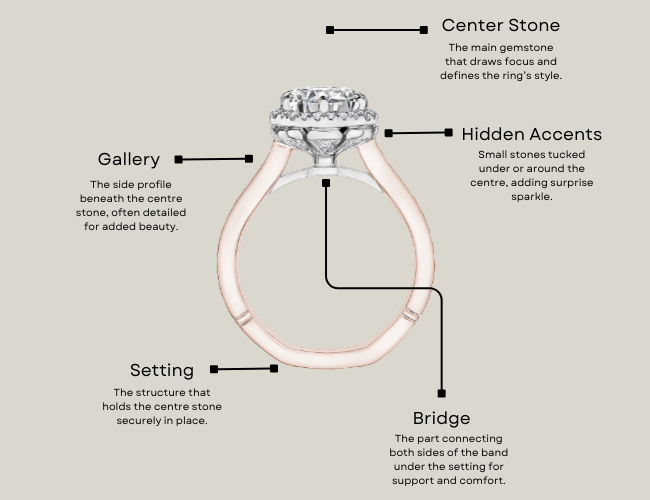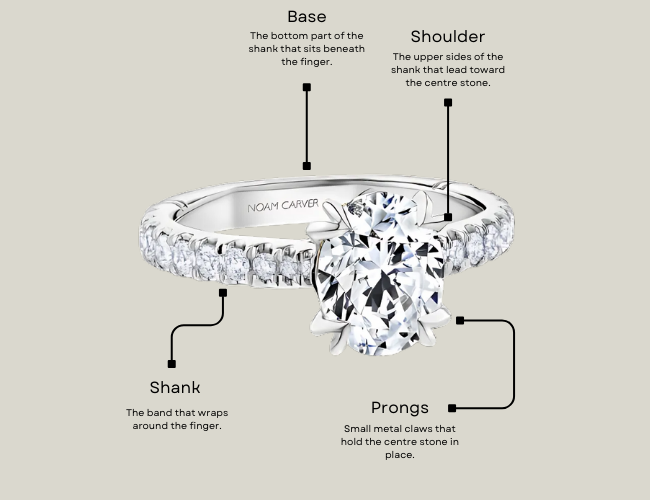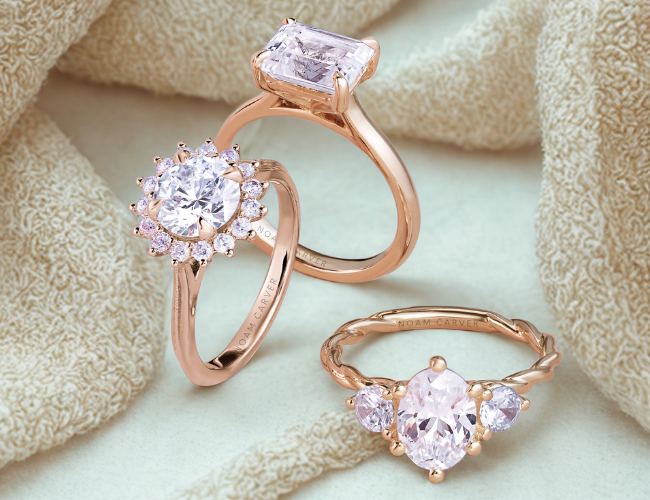Anatomy of an Engagement Ring: Every Part Explained
January 2nd, 2023
Anatomy of an Engagement Ring: Every Part Explained
Whether you're just starting your engagement ring journey or gathering ideas for your Pinterest board, you’ve likely encountered some new terminology. While a ring may look simple at first glance, the truth is that every engagement ring is made up of multiple distinct parts—each playing a role in its beauty, function, and symbolism.
At GMG Jewellers, we believe the more you know about a ring’s anatomy, the more confident and excited you'll feel during the selection process. Let’s take a closer look at the key components of an engagement ring and what they mean for your final design.

Understanding the Engagement Ring Setting
The setting refers to how the centre stone and any accent stones are mounted onto the band. The setting plays a major role in both the aesthetics and practicality of your ring. Here are some of the most popular setting styles we offer at GMG Jewellers:
- Solitaire: A timeless classic featuring one centre stone and a sleek, all-metal band. Minimal and elegant — perfect for showcasing the diamond.
- Halo: Smaller diamonds encircle the centre stone, giving it a larger and more dazzling appearance. Ideal for those who love extra sparkle.
- Three-Stone: Symbolizing a couple’s past, present, and future, this design features a main centre gem flanked by two side stones.
- Hidden Accents: These modern designs feature surprise diamonds beneath the centre stone — in the gallery, bridge, or even in a hidden halo — for sparkle from every angle.
- Bezel: The centre stone is securely surrounded by a metal rim. A favourite for modern brides who want durability with a sleek look.
- Pavé: The band is encrusted with small diamonds, closely set for continuous shimmer. It’s an elegant way to add refined sparkle.

Deconstructing the Ring’s Structure
Let’s explore the parts of the ring beyond the stones:
Head
The head is the structure that holds the centre stone. It includes the prongs and gallery, and influences how the stone is displayed from every angle.
Prongs
These are the tiny metal arms that secure the centre stone. Prongs can be claw-like, rounded (bead prongs), or V-shaped for certain cuts like pear or marquise. Most rings have four or six prongs.
Gallery
Located beneath the centre stone, the gallery adds architectural beauty and can feature intricate detailing or hidden diamonds visible from the side profile.
Bridge
The bridge is the part of the ring that spans across the finger under the head. It offers both support and style — often embellished with engraving, milgrain, or additional accent stones.
Shoulder
The shoulders are the upper sides of the band that lead into the centre setting. They can be sleek and straight or feature artistic curves and twists for added design flair.
Shank (Band)
The shank is the portion that wraps around your finger — what most people refer to as the “band.” It can be solid metal or adorned with accent stones, and its shape, thickness, and width affect both the comfort and appearance of your ring.
Sizing Area
Located at the very bottom of the band, this part allows for resizing if needed. At GMG Jewellers, we recommend leaving the sizing area free of diamonds or design details to make future adjustments smoother.
Final Thoughts from GMG Jewellers
Understanding each part of an engagement ring empowers you to make informed decisions — and ensures your final choice reflects your personal style. At GMG Jewellers in Saskatoon, we’re here to guide you through every step of your ring journey.
Whether you're dreaming up a custom design, comparing setting styles, or simply curious to learn more, our jewellery specialists are ready to help — in person, virtually, or through live chat on our website.


